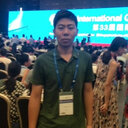Effects of Glycosylation on Biodistribution and Imaging Quality of Necrotic Myocardium of Iodine-131-Labeled Sennidins.
Keywords
Abstract
Sennidins are necrosis-avid agents for noninvasive assessment of myocardial viability which is important for patients with myocardial infarction (MI). However, high accumulation of radioactivity in the liver interferes with the assessment of myocardial viability. In this study, we compared sennidins with sennosides to investigate the effects of glycosylation on biodistribution and imaging quality of sennidins.
Sennidin A (SA), sennidin B (SB), sennoside A (SSA), and sennoside B (SSB) were labeled with I-131. In vitro binding to necrotic cells and hepatic cells and in vivo biodistribution in rats with muscular necrosis were evaluated by gamma counting, autoradiography, and histopathology. Single photon emission computed tomography/computed tomography (SPECT/CT) images were acquired in rats with acute MI.
The uptake of [131I]SA, [131I]SSA, [131I]SB, and [131I]SSB in necrotic cells was significantly higher than that in viable cells (p < 0.05). Hepatic cells uptake of [131I]SSA and [131I]SSB were 7-fold and 10-fold lower than that of corresponding [131I]SA and [131I]SB, respectively. The biodistribution data showed that the radioactivities in the liver and feces were significantly lower with [131I]sennosides than those with [131I]sennidins (p < 0.01). Autoradiography showed preferential accumulation of these four radiotracers in necrotic areas of muscle, confirmed by histopathology. SPECT/CT imaging studies showed better image quality with [131I]SSB than with [131I]SB due to less liver interference.
Glycosylation significantly decreased the liver uptake and improved the quality of cardiac imaging. [131I]SSB may serve as a promising necrosis-avid agent for noninvasive assessment of myocardial viability.






